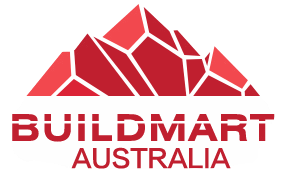Artificial grass has become a popular choice for homeowners and businesses seeking a low-maintenance and aesthetically pleasing alternative to natural grass. Whether it’s used to create a lush lawn, a play area, or to beautify a patio, the success of artificial turf lies in its installation, particularly in how well it is secured in place. A properly installed artificial grass not only looks impressive and natural but also withstands various weather conditions and wear over time.
In this guide, we will delve into the detailed process of installing artificial grass, focusing on the crucial steps needed to ensure that it remains firmly in place and retains its pristine appearance for years to come. From preparing the base to the final touches, each step is pivotal in achieving a beautifully laid out, durable artificial lawn.
Steps to secure artificial grass
Holding artificial grass in place is crucial for its longevity and aesthetic appeal. Here’s how you can secure artificial grass effectively:
- Preparing the Base:
- Clearing the Area: Remove any existing grass, debris, or stones from the area where you’re laying the artificial grass.
- Levelling the Ground: Ensure the area is level. If necessary, use a landscaping rake or similar tool to smooth out bumps.
- Compacting the Soil: Use a plate compactor or a hand tamp to compact the soil, creating a solid base that won’t easily shift.
- Adding a Sub-Base: Lay a 2-3 inch layer of crushed stone or gravel, then compact it. This layer improves drainage and provides a stable base.
- Laying a Weed Membrane:
- This barrier prevents weeds from growing through your artificial grass. Roll it out over the compacted sub-base and secure it with nails or garden staples.
- Rolling Out the Grass:
- Unroll the artificial turf over the prepared area. Allow some time for it to settle and flatten out any creases or wrinkles.
- Make sure the grass fibres point in the same direction if you’re installing multiple pieces.
- Trimming the Grass:
- Use a sharp utility knife or heavy-duty scissors to cut the turf to the desired shape, fitting it to the area.
- Securing the Perimeter:
- Use landscaping pins, U-shaped nails, or turf pegs to anchor the edges of the grass.
- Place the pins about 10-15 inches apart and drive them through the turf and into the ground.
- Glueing Seams (for larger areas):
- If your installation requires joining pieces, position the pieces to ensure the fibres match.
- Apply a specialised turf adhesive to a joining tape, then lay the edges of the turf over the tape, pressing firmly to secure.
- Applying Infill (optional but recommended):
- Infill helps the grass blades stand upright and adds weight to hold the turf down.
- Spread the infill evenly across the turf and then use a power broom or stiff brush to work it down into the fibres.
- Brushing the Grass:
- After the infill settles, brush the turf to fluff up the fibres. This helps the lawn look fuller and more natural.
The installation of artificial grass is a meticulous process that requires careful planning and execution. By following the steps outlined – from preparing the base to securing the turf and adding finishing touches – you can ensure that your artificial grass is not only aesthetically pleasing but also durable and long-lasting. A well-installed artificial lawn offers a beautiful, low-maintenance solution for various settings, providing a green oasis that remains vibrant and inviting year-round.
Remember, each artificial grass product might come with specific instructions from the manufacturer, so it’s always a good idea to refer to these as well. Additionally, if you’re not confident in your DIY skills, it might be worth hiring a professional to ensure the installation is done correctly.
Reasons to keep the artificial grass in place
Holding artificial grass firmly in place is crucial for several reasons, which are essential to both the longevity and functionality of the installation:
- Appearance and Aesthetics: Properly secured artificial grass maintains its shape, alignment, and overall aesthetic appeal. It prevents wrinkles, bunching up, or shifting, which can detract from the lawn’s natural look.
- Safety and Usability: Unsecured or loosely laid artificial turf can pose tripping hazards, especially in areas with high foot traffic or where children play. Ensuring the grass is firmly in place enhances safety for everyone using the space.
- Durability and Longevity: When artificial grass is well-anchored, it withstands various weather conditions, including strong winds, heavy rain, and extreme temperatures. This prevents the turf from lifting, tearing, or getting damaged, thereby extending its lifespan.
- Prevention of Edge Curling: Over time, the edges of unsecured artificial grass may start to curl or fray. Securing the edges properly helps maintain a neat and tidy appearance and prevents potential tripping hazards.
- Maintains Surface Integrity: Proper installation and anchoring ensure that the base underneath the grass remains intact and undisturbed. This is crucial for maintaining adequate drainage and preventing the formation of uneven surfaces.
- Reduces Maintenance Effort: A well-secured artificial lawn stays in good condition with minimal maintenance. It eliminates the need for frequent adjustments or corrections, which might be necessary if the turf were to move or become dislodged.
- Enhances Overall Functionality: For specialised applications like sports fields or playgrounds, ensuring that the artificial turf is securely in place is vital for the functionality of the space. It ensures consistent playing conditions and reduces the risk of injuries.
In summary, securing artificial grass is fundamental to ensuring its functionality, safety, aesthetic appeal, and longevity. It’s an essential step that underpins the successful implementation of any artificial turf project.
